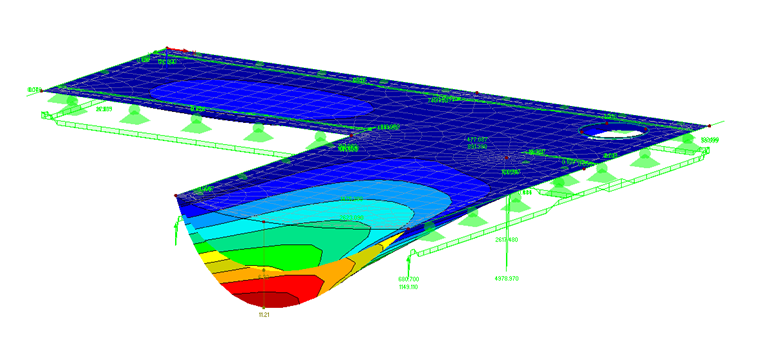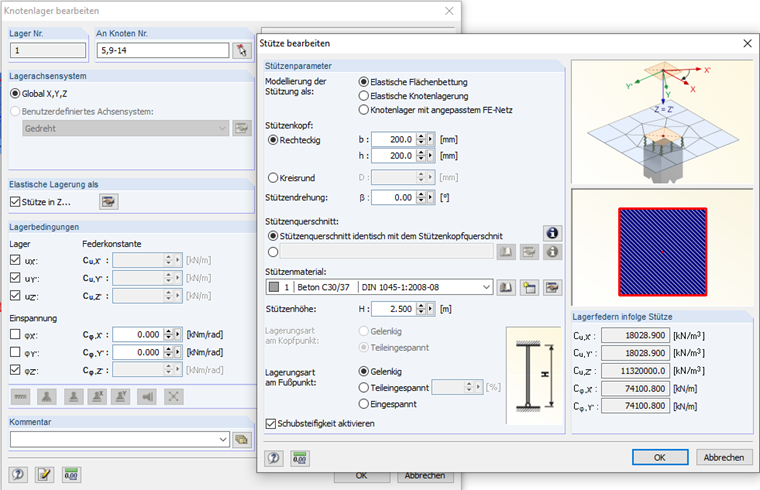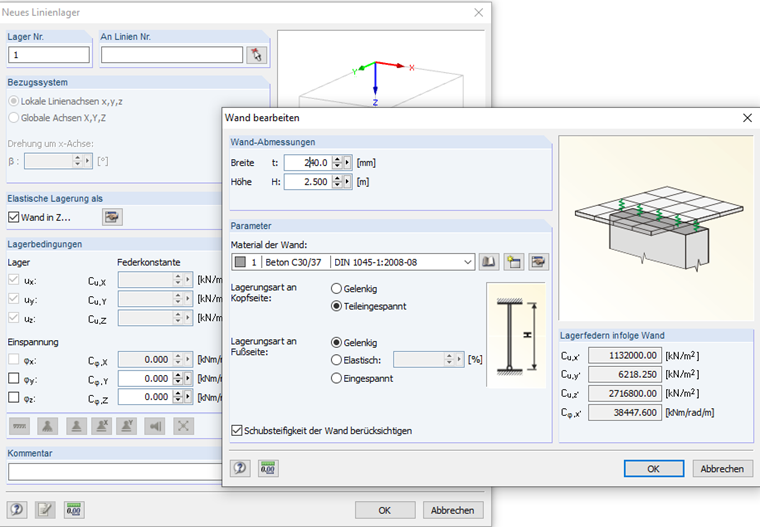The support reactions are so large that singularities occur at the ends of the line supports due to the fixed restraint.
This problem can be avoided by modeling the structure realistically: The ceiling slabs that rest on wall panes are not really fully restrained in the self-weight direction. Due to the stiffness of the wall, the support as a spring is more realistic. The spring stiffness of a line support that should simulate a wall plate is calculated by k = (E*d) / h (where E is the modulus of elasticity of the wall, d is the thickness of the wall, h is the height of the wall).
By modeling line supports with springs, you can avoid singularities, as shown in the image for line support reactions.
Modeling supports as springs is also reasonable for point supports. In this case, RFEM provides the "Column" function for point support generation, whereby the spring parameters are automatically calculated and applied from the column geometry.


